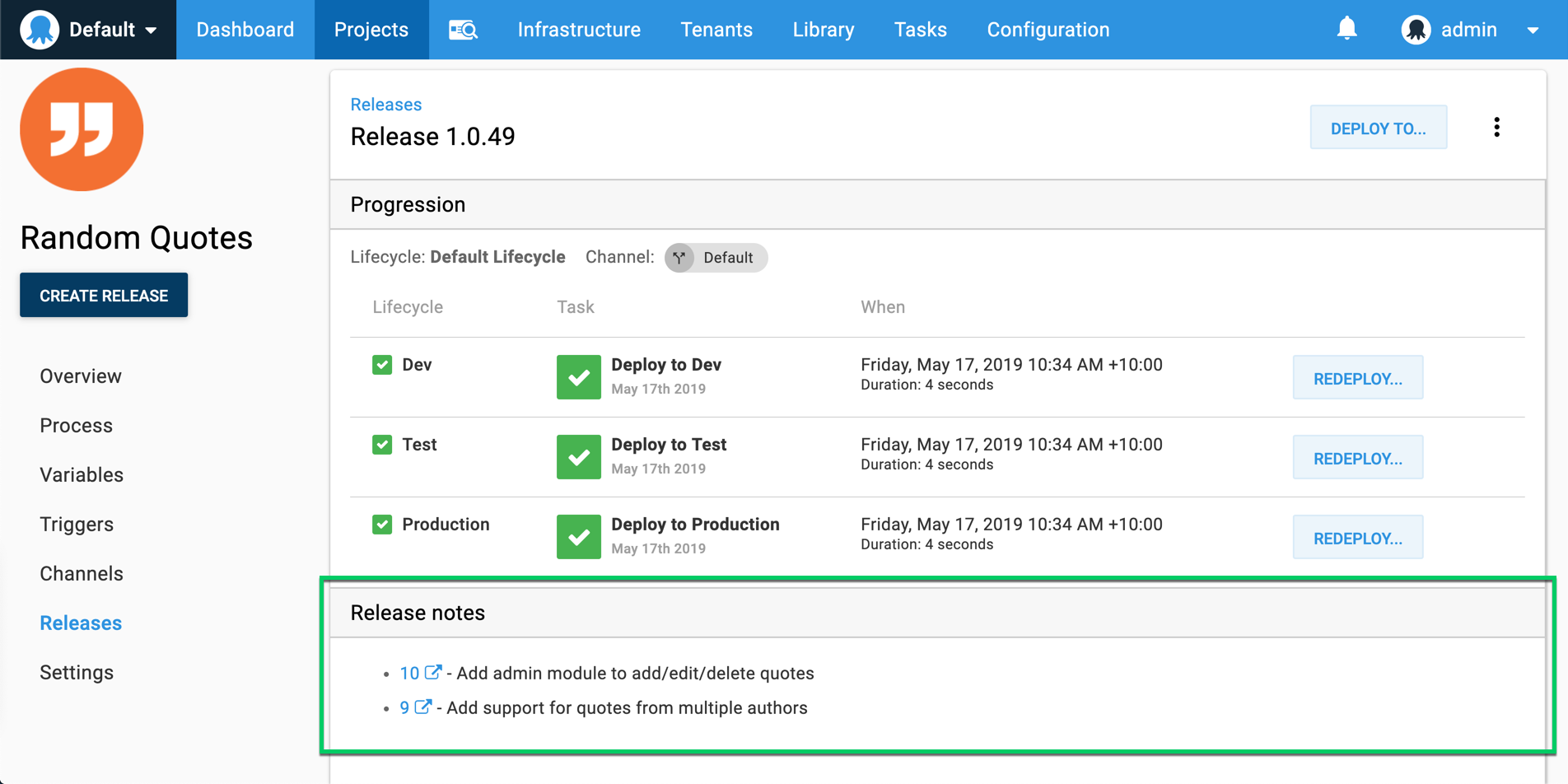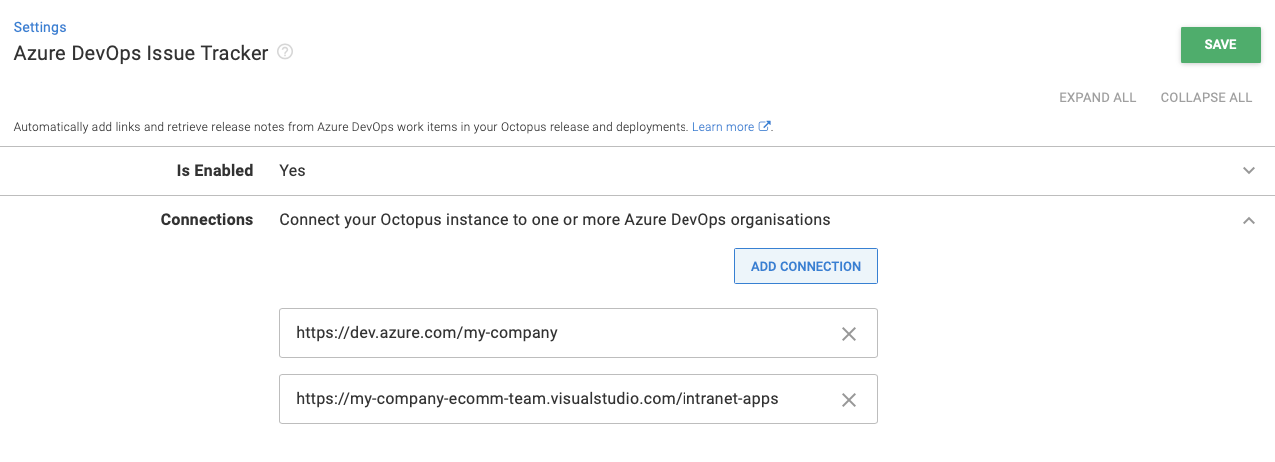Octopus integrates with Azure DevOps work items. The integration includes the ability to:
- Automatically add links to Azure DevOps work items in your Octopus releases and deployments.
- Retrieve release notes from Azure DevOps work item comments for automatic release note generation.
How Azure DevOps integration works

Azure work items aren’t currently supported unless the BuildEnvironment is Azure DevOps.
- Associate code changes with their relevant work items in any of the following ways:
- Edit a pull request in Azure DevOps, and use the Work Items panel to select a work item.
- Edit a work item in Azure DevOps, and use the Development panel to add a pull request link (before build), or a commit link, or a build link.
- When you commit code. If you enable the repository setting: Automatically create links for work items mentioned in a commit comment under Project Settings (Repositories), you can include
#followed by a valid work item ID in the commit message. For example,git commit -a -m "Fixing bug #42 in the web client".
- The Octopus Deploy plugin for your build server pushes the commits to Octopus. These are associated with a package ID and version (The package can be in the built-in Octopus repository or an external repository).
- The Azure DevOps Issue Tracker extension in Octopus uses the build information to request work item references from Azure DevOps.

- When creating the release which contains the package version, the work items are associated with the release. These are available for use in release notes, and will be visible on deployments.

Availability
The ability to push the build information to Octopus, which is required for Azure DevOps integration, is currently only available in the official Octopus plugins:
Deployment updates not supported
The Azure DevOps integration does not support the ability to have Octopus release and deployment information displayed within Azure DevOps work items.
Configuring Azure DevOps integration
The following steps explain how to integrate Octopus with Azure DevOps:
- Configure your build server to push build information to Octopus. This is required to allow Octopus to know which work items are associated with a release.
- Configure the Azure DevOps connection in Octopus Deploy.
Configure your build server to push build information to Octopus
To integrate with Azure DevOps work items, Octopus needs to understand which work items are associated with a release. Octopus does this by using the build information associated with any packages contained in the release to request work item references from Azure DevOps.
To supply the build information:
- Install one of our official build server plugins with support for our build information step.
- Update your build process to add and configure the Octopus Build Information step.
If you had previously been using the older functionality on the Create Octopus Release step, you should disable all of the release note options on that step as they use different mechanics and will conflict with the new features.
![]()
Connect Octopus to Azure DevOps
-
Configure the Azure DevOps Issue Tracker extension in Octopus Deploy.
In the Octopus Web Portal, navigate to Configuration ➜ Settings ➜ Azure DevOps Issue Tracker
-
Add a Connection, and set the following values:
-
Azure DevOps Base URL. This tells Octopus where the Azure DevOps instance is located.
-
Personal Access Token (PAT). Unless the Azure DevOps instance is public, you’ll need to supply an access token, created in the Azure DevOps User Settings (under Personal access tokens), with authorization to read scopes
BuildandWork items. -
Release Note Prefix. This value is optional. If specified, Octopus will look for a work item comment that starts with the given prefix text and use whatever text appears after the prefix as the release note. This will then be available in the build information as the work item’s description. If no comment is found with the prefix then Octopus will default back to using the title for that work item.
For example, a prefix of
Release note:can be used to identify a customer friendly work item title vs a technical feature or bug fix title.
Multiple Azure DevOps connections: If you need to connect to more than one Azure DevOps organization, repeat this step.
Support for multiple Azure DevOps connections was added in Octopus 2021.3.

-
-
Ensure the Is Enabled property is enabled
When configured, this integration will retrieve Azure DevOps work item details and add details about them in your Octopus releases and deployments. If you ever need to disable the Azure DevOps Issue Tracker extension you can do so under Configuration ➜ Settings ➜ Azure DevOps Issue Tracker.
Learn more
Help us continuously improve
Please let us know if you have any feedback about this page.
Page updated on Wednesday, October 4, 2023